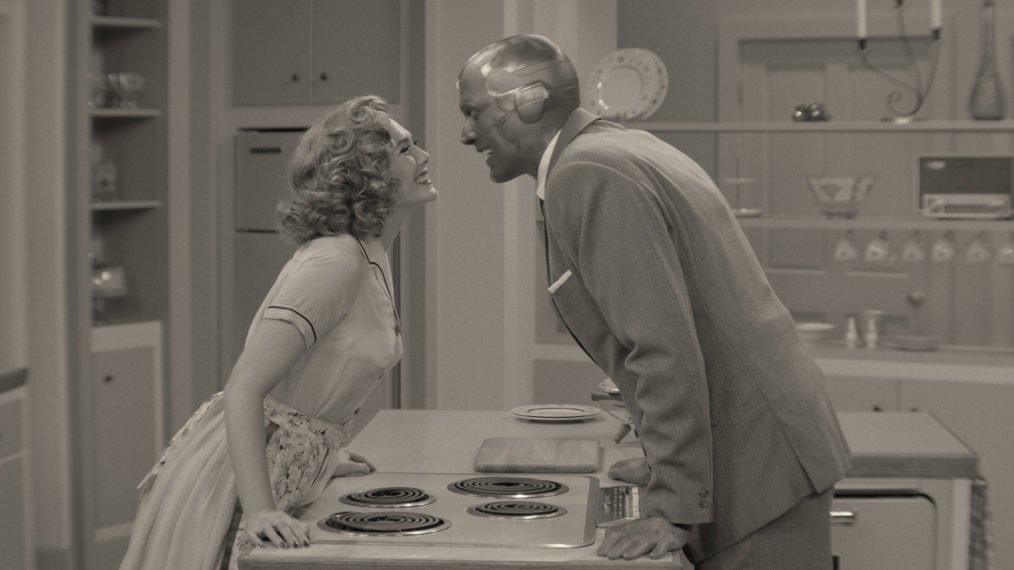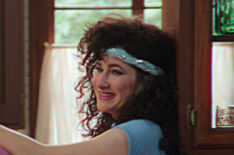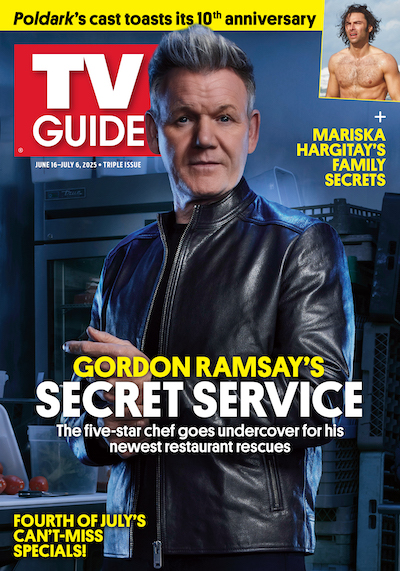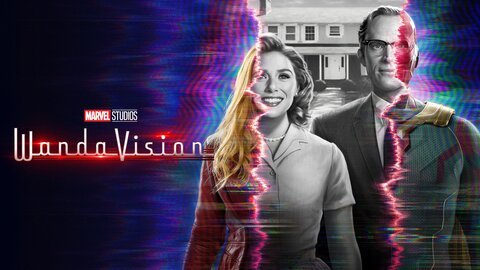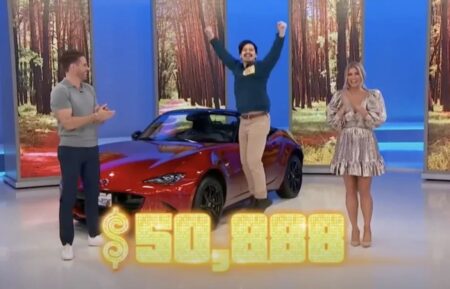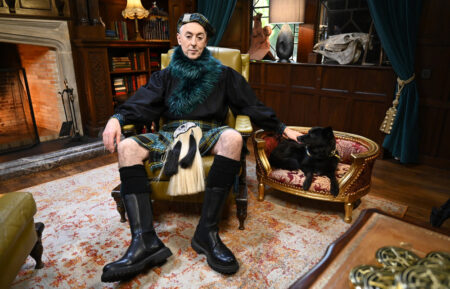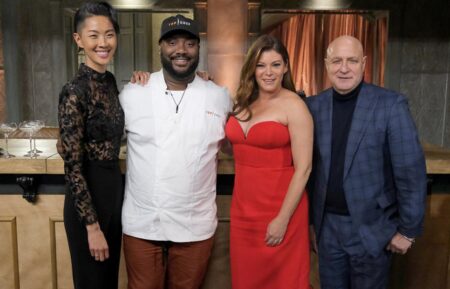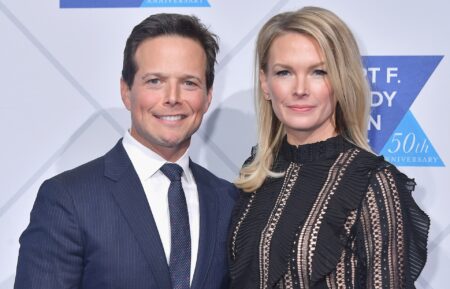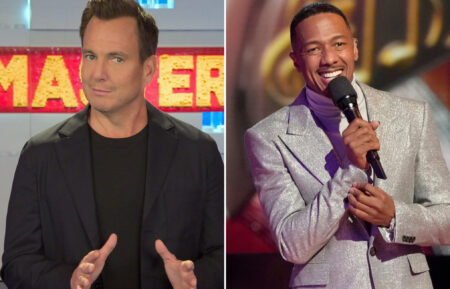‘WandaVision’ Director Matt Shakman on How Practical Effects & a Live Audience Transport Them to the ’50s & ’60s
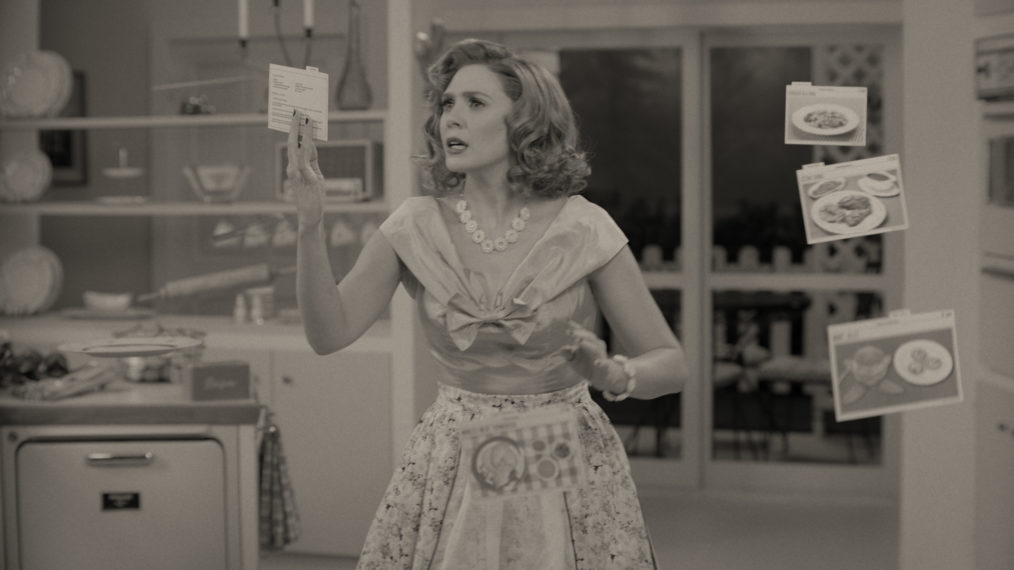
Q&A
Disney+’s WandaVision is a wild adventure that places Avengers lovebirds Wanda Maximoff/Scarlet Witch (Elizabeth Olsen) and android Vision (Paul Bettany) inside the 20th century’s greatest sitcom styles — all while maintaining the larger mystery of why it’s happening in the first place.
We wanted to find out more about pulling off the show’s central sitcom-y conceit, so we chatted with WandaVision director Matt Shakman about pulling off the incredibly detailed first two episodes, which pay homage to television of the ’50s and ’60s.
Below, Shakman talks about practical effects, shooting on the very recognizable Blondie Street, and more.
Immediately, viewers are transported to a black-and-white, 1950s-era American sitcom. What inspired you the most when constructing those scenes?
We were inspired by so many shows. We watched basically every canonical classic sitcom for each era we were looking at. In the 50s, I would say, The Dick Van Dyke Show. That was one of our chief inspirations and I think [Dick Van Dyke] has been an inspiration for most sitcoms ever made. It was a show that managed to be incredibly funny, while also being brave and true about our lives. That was the kind of juggling act we were trying to do as well. We were looking to tell a story that was very grounded and ultimately is about something important, but is able to be funny at the same time.
How did shooting Episode 1 in front of a live studio audience affect the final product?
I come from theater and I’m a big believer in how an audience affects an actor’s performance. The Dick Van Dyke Show and I Love Lucy and all those great shows that were done in front of a live studio audience were different because of that audience — the adrenaline that comes from going out there and putting on a show and knowing that you’ve got one crack at it, as opposed to, you know, 10 or 15 takes, or, if it’s David Fincher movie, maybe 100. It changes how you’re approaching the work. It was amazing to see our actors, who are all extraordinary, love doing that live performance. It really is just lightning in a bottle.
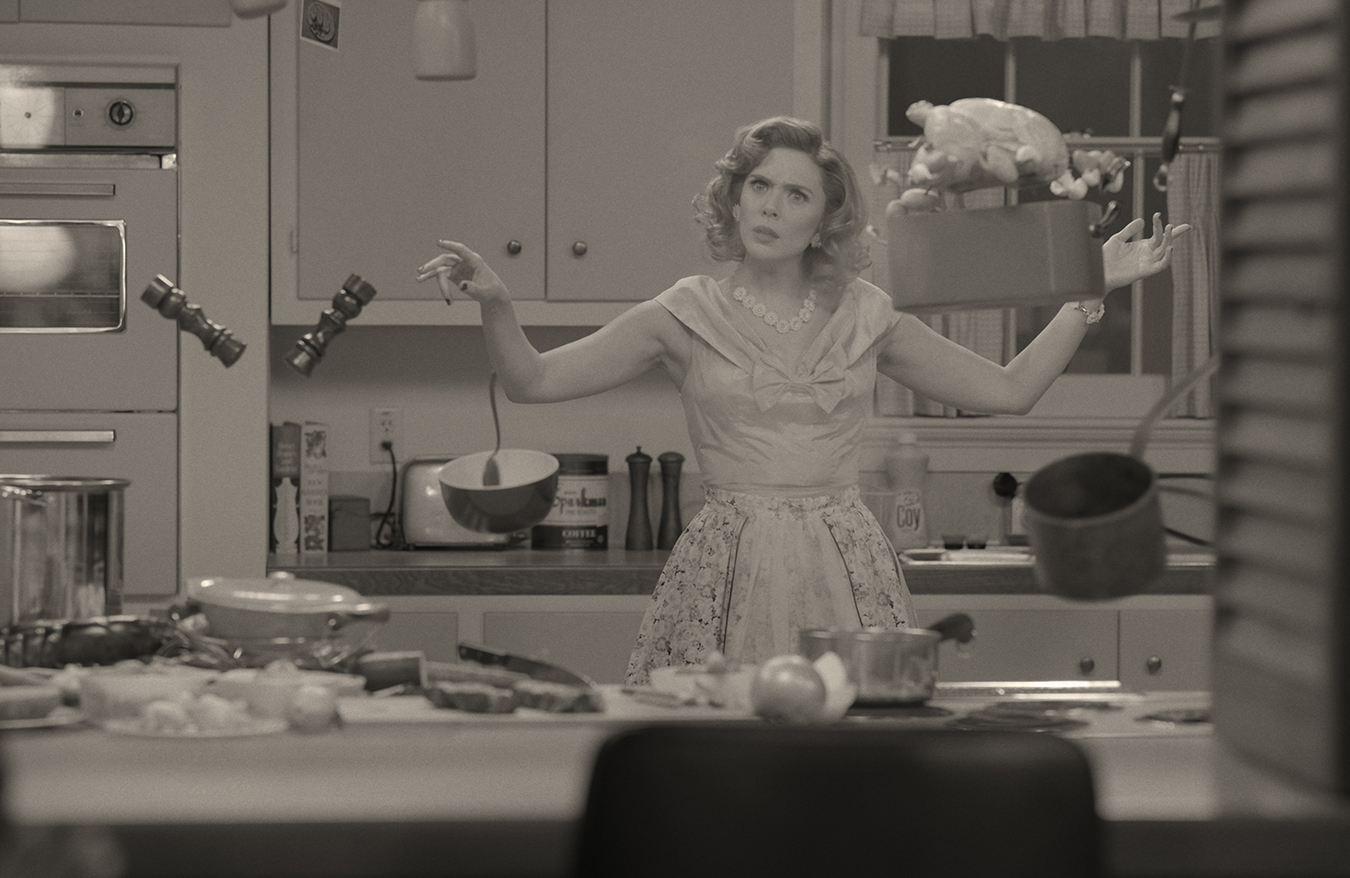
Marvel Studios 2020
When Wanda is cooking in Episode 1 and all this food is flying around the kitchen, was that all practical effects?
That’s mostly wires, yeah. There are a few things that we couldn’t fly, but most of that stuff is wires. [Special effects supervisor] Dan Sudick — the head of special effects for most of Marvel’s movies — when we had our first meeting, I thought he was going to roll his eyes when I made this request, and instead of laughing at me, he said, “I love that.” He came up in this business under the guys who did Bewitched and I Dream of Jeannie, and I think his approach to it and everyone’s approach to it, was this kind of loving embrace of the classic sitcom in terms of style and also the way that it had been made — vintage lenses, vintage lighting, clothing — everything we could to make it feel like we were actually making an episode of Bewitched or Dick Van Dyke.
Were all the props original for the series?
Most of the time we made everything. Russell [Bobbitt], our prop master, is a genius, and he’s made everything from Thor’s hammer to Captain America’s shield. But he also did Pleasantville back in the day, and he’s really into period stuff. He created so many wonderful props for our show because everything had to be created from scratch and he did a brilliant job. We’ve got a few Easter eggs and props in there though, which I’ll save for the eagle-eyed viewer to discover.
How did you choose which shows to emulate with so much television history at your hands?
We embraced all of the shows that have lasted. We looked at Bewitched and I Dream of Jeannie for the ’60s and The Brady Bunch and All in the Family for the ’70s, but the key references have always been family sitcoms, because we’re telling a story about family. So, we stayed away from like, The Mary Tyler Moore Show and Taxi and things like that because they didn’t have quite as much relevance to us in terms of telling a story about a family.
You also have a particular connection to sitcoms, as you played J.R. on the Growing Pains spinoff, Just the Ten of Us. How did your experience help shape WandaVision‘s sitcom moments?
Well, it’s funny, you know, both Lizzie [Olsen] and I have our own sitcom connections — she and I both grew up on sitcom sets. She was visiting her sisters [Mary Kate and Ashley Olsen on Full House] and I was acting in them. So there was a meta quality there for sure.
We shot at Blondie Street at Warner Bros. Ranch, which is where all the old sitcom houses are. It’s sort of a half-circle of the I Dream of Jeannie house and the Bewitched house and The Partridge Family house — you name it, they’re all there. They shot The Middle there, and Young Sheldon shoots there. And I used to shoot there as well.
It was a strange experience to be back with the ghosts of my sitcom past. But shooting in that particular location was all about authenticity, and finding that unique look for a sitcom street. It has to feel real, but at the same time, unreal, and you can’t just go into a neighborhood and find it. We looked, and there really was no substitute for being on a backlot, in order to make it feel like it was 80% real and 20% artificial.
WandaVision, Fridays, Disney+
From TV Guide Magazine
Behind the Scenes With Gordon Ramsay: 20 Years of Cooking Up TV Hits
The celebrity chef reflects on redefining culinary television and his fiery journey Hell’s Kitchen to Secret Service. Read the story now on TV Insider.

